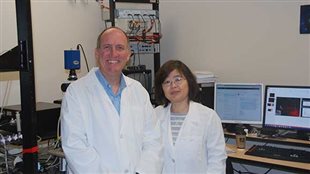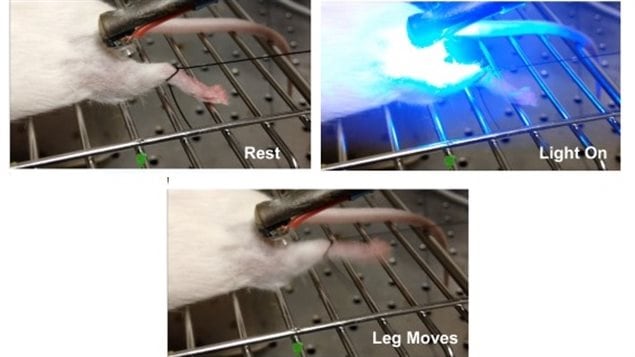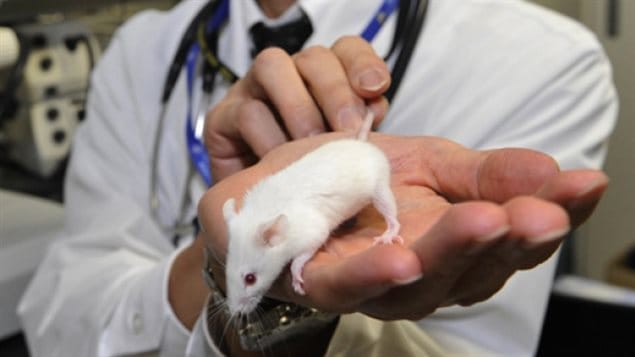Whether through injury or disease, if a nerve has been damaged, it can no longer send signals to activate the muscle. When that happens the muscle begins to degenerate in a process known as muscle wasting.
Researchers at Dalhousie University in Halifax Nova Scotia have developed a technology using an external light source to stimulate the muscles to keep them active and reduce or prevent muscle atrophy or “wasting”.
Victor Rafuse (PhD) is Director of the Brain Repair Centre and professor of Medical Neuro-science at Dalhousie.
Listen
The research involved genetics, and a light-activated ion channel discovered in a single-celled aquatic algae.
When inserted into a muscle, the ion becomes “activated” in reaction to a source of blue light which penetrates through the skin, with no harm. It creates a signal that causes the muscle to contract, just like it would when the nerve was connected.
The blue light used is a simple LED that consumers can buy at stores.
Blue light from a very off-the-shelf LED light can very efficiently not only control the muscle but do it in a way that’s almost indistinguishable from how the mouse can actually activate its own muscle,” said Rafuse.
The research was published in the online journal Nature Communications, entitled “Direct optical activation of skeletal muscle fibres efficiently controls muscle contraction and attenuates denervation atrophy”.
Professor Rafuse says the development is yet another tool that can be used to help people who lose function over their muscles.

The team used genetics to insert a light-activated ion channel, first discovered in a single-celled aquatic algae, into the muscles of a group of mice.
In muscles, the channel to the muscle is opened by a chemical signal from the nerve, which causes certain things to happen resulting in the muscle contracting.
In this green algae, the channel is quite similar except it reacts to light instead of a chemical signal. Thus when inserted into the muscle ion channel enabled the muscles to contract when stimulated with a blue LED light, which can be bought anywhere.
This might also help eventually to overcome issues of paralysis.
Another hurdle for the future comes from the fact the DNA manipulation needed to insert the light-sensitive ion channel can only be done on an embryo, which isn’t practical given that ALS symptoms aren’t usually seen until adulthood. Also, while this can be done with lab mice, scientists cannot manipulate human genetics, so the team is working towards another method to create the ion in human muscle, perhaps through a viral delivery metyod or other. “Ultimately what we’d like to be able to do is follow up on these studies and find a way to express these channels in muscle without the use of genetics,” he says.
Professor Rafuse says that while the experiment worked better than expected, it is still a long way from human applications yet.
The research team included surgery resident and PhD candidate, Dr. Philippe Magown, masters student Basavaraj Shettar, and assistant professor of Medical Neuroscience, Dr. Ying Zhang, in addition to Dr. Rafuse.







For reasons beyond our control, and for an undetermined period of time, our comment section is now closed. However, our social networks remain open to your contributions.